SFDA 2026 First Screening Results Announcement
(Wear Category)
-

Tokyo Mode Gakuen
浅井 勇貴
Work Title:Scattered Checkerboard Pattern
Concept
This piece is inspired by the image of shattered glass scattered in all directions.
It intentionally uses this kind of unpredictable uncertainty and unevenness as a pattern.Features
- The design collides opposing elements of kimono and tailoring, blending the splendor of traditional Japanese patterns into the design.
- It is a new approach to making patterns out of patterns.
-
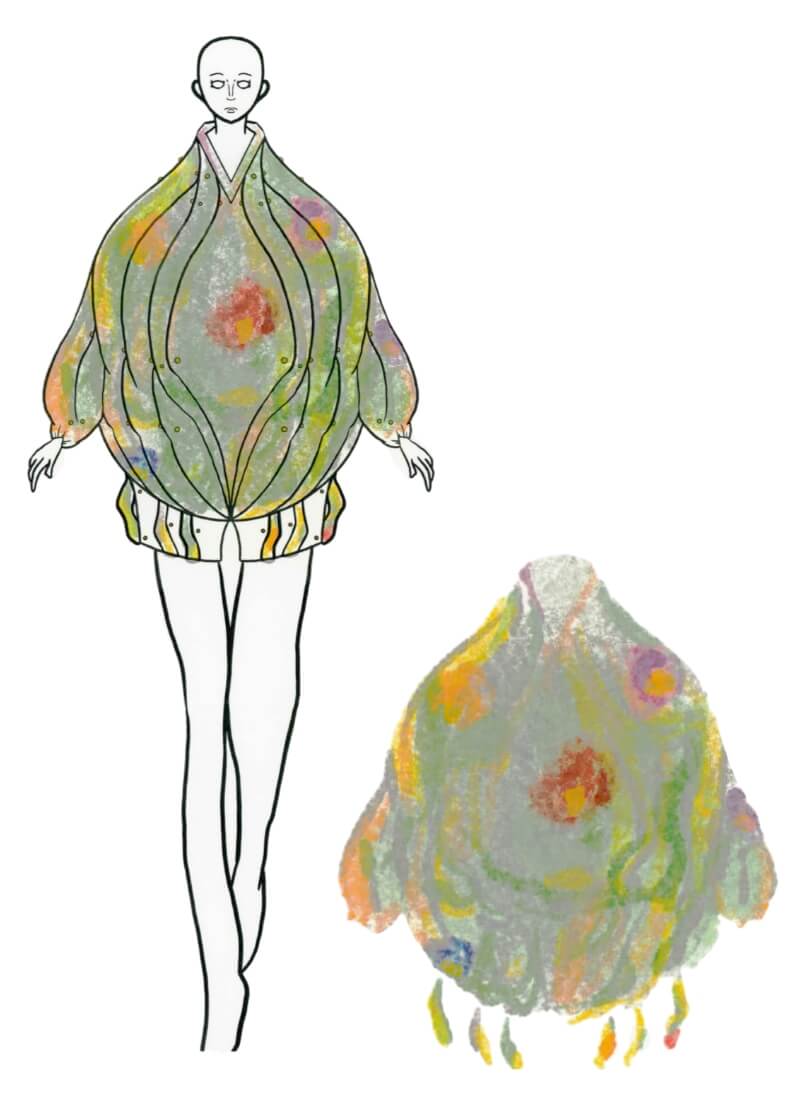
Tokyo Mode Gakuen
池田 匠
Work Title:UPS AND DOWNS
Concept
The ups and downs of emotion, the ups and downs of life.
The fluctuations that surround us all.Features
- Ups and downs are expressed through wave-like forms, created by raised areas in the fabric and fixed in place with rivets.
- With sustainability in mind, a three-dimensional piece is constructed from band-shaped fabric cuttings, minimizing waste.
-
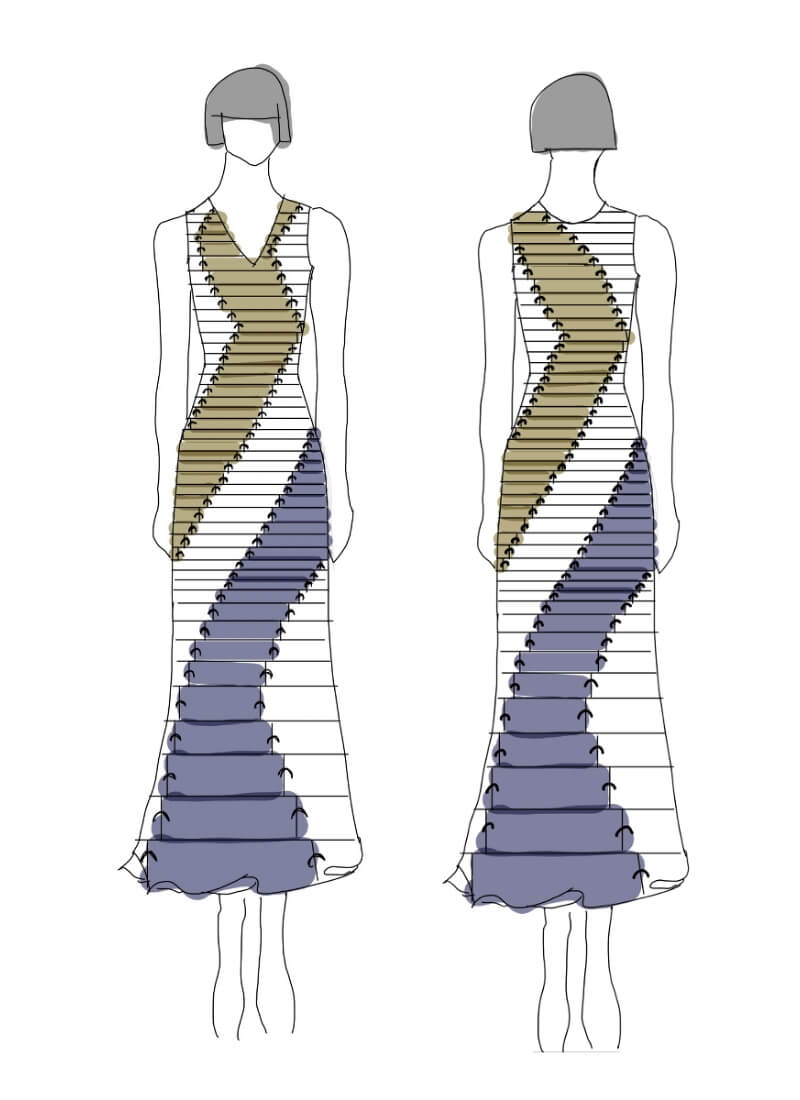
ESMOD Tokyo
市川 実花
Work Title:Edit me
Concept
Based on the idea that affirming desires is essential for sustainability, this work re-examines the structure of clothing. By breaking garments into parts, reconstruction (“editing”) becomes easier. Clothes that can constantly change can continue to meet the ever-evolving desires of the wearer.
Features
- The modular pieces of this garment can be freely “edited” in terms of color and shape. When the wearer wants “more,” they can achieve this by swapping parts without buying new clothes.
- Each part is composed of small rectangles, so even limited materials like old cloth or scraps can become the stars of a free and sustainable cycle.
-
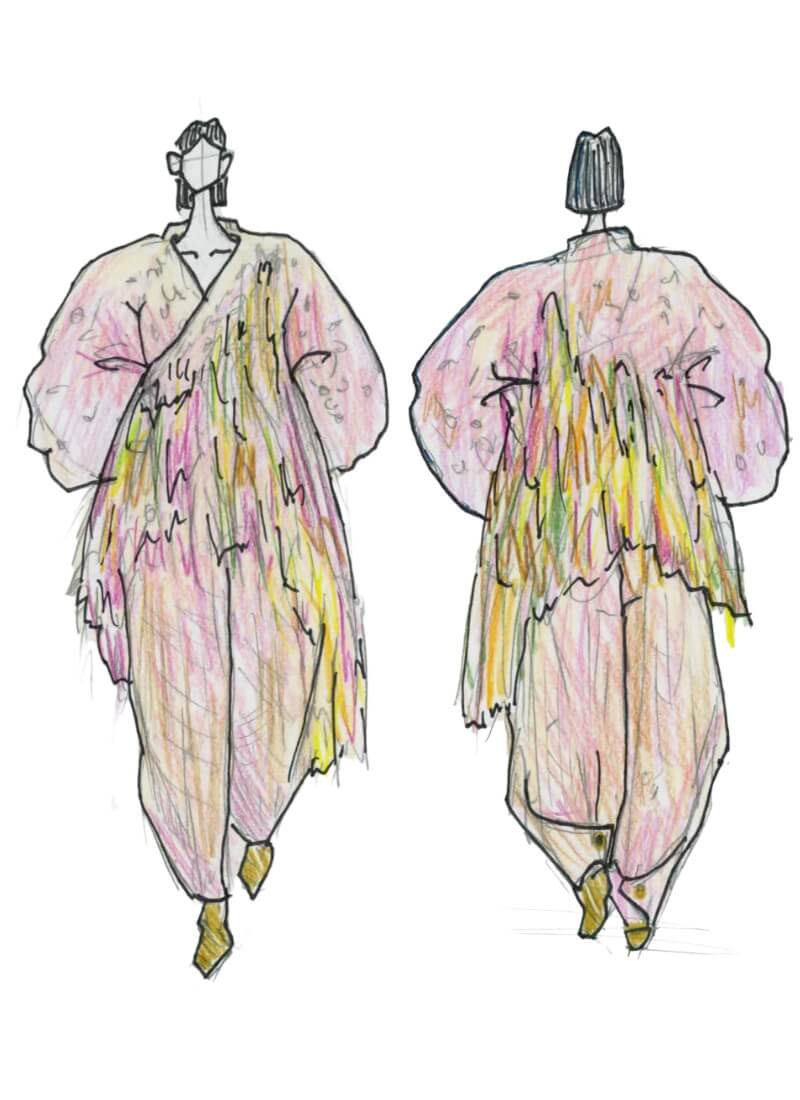
General application
梅宮 青
Work Title:musuhi
Concept
Inspired by the ancient Japanese Shinto concept of "musuhi" (the spirit of creation and connection), this piece honors kimono, which have been worn imbued with various meanings and sentiments, and seeks to create new value.
Features
- The main material is kimono fabric from old kimonos.
- Original textiles are crafted to leverage the inherent colors of kimono.
-

Tokyo Mode Gakuen
漆原 幹人
Work Title:Re-Tie
Concept
“Tying new knots, connecting life.”
Old kimonos, no longer in use, are given new life by being re-tied as “ribbons,” linking people to one another and to the future. All the ribbons gather together like a single forest, expressing the continuity of life.Features
- All parts are shaped as rectangular ribbons, minimizing fabric waste and reducing cutting loss.
- The dense, layered mass of ribbons covers the entire piece, creating an overwhelming visual impact. They sway beautifully with movement, catching the wind and light.
-
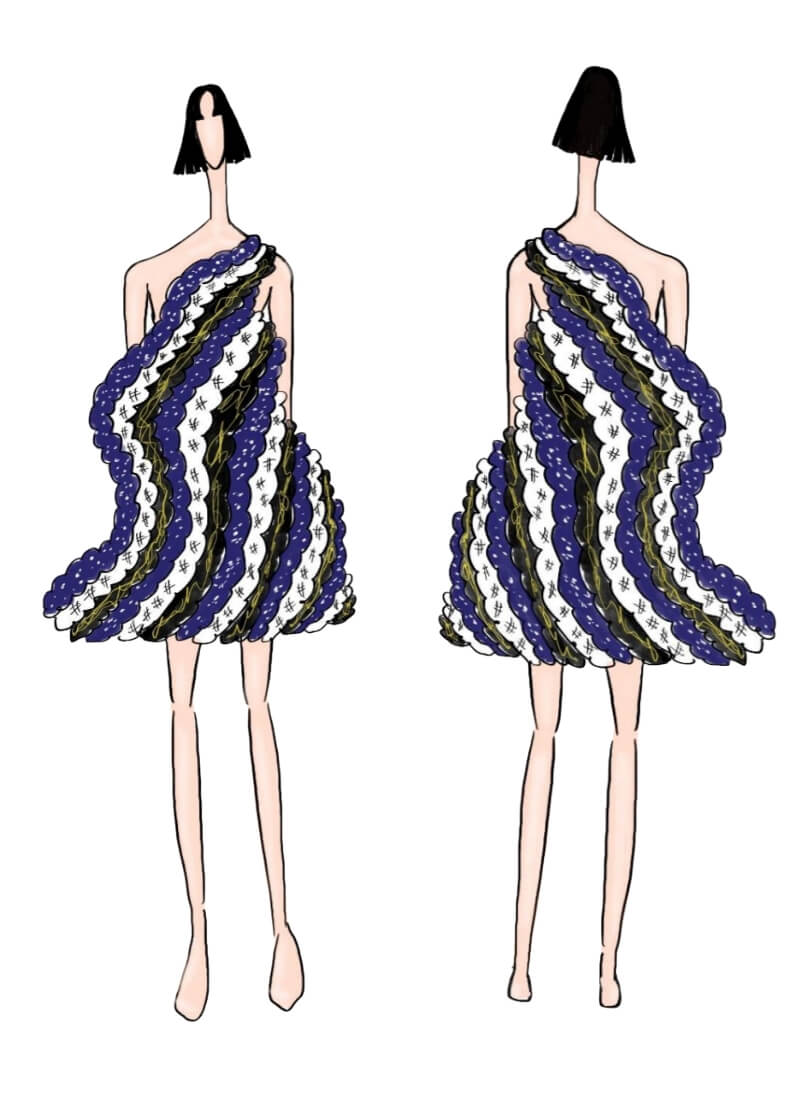
Tokyo Design Plex Institute
片柳 由菜
Work Title:Shrink
Concept
By utilizing bias tape, this piece achieves a three-dimensional quality, dynamic movement, and functionality rarely seen in traditional Japanese clothing, offering a contemporary take on classic Japanese style.
Features
- Elastic gathers add stretch and volume to non-stretch kimono fabric, making the garment easier to wear and move in.
- With sustainability in mind, the design uses bias tape for efficient pattern cutting and simple construction.
-

General application
坂野 瀬奈
Work Title:Nishiki Brocade — Weaving Scarlet and Black
Concept
The piece reconstructs the idea of “nishiki” brocade using the traditional technique of rag weaving.
Old fabrics are torn and rewoven, drawing on the duality and significance of a festive Scarlet and a contemplative Black.
The garment evokes the image of a nishiki carp swimming through water, rippling the surface.
The piece expresses a uniquely Japanese sense of beauty that is both dazzling and tranquil, celebratory and somber—radiant yet profound.Features
- The upper body is tailored in the style of a classic jacket, while the elegantly flaring hem captures the graceful movement of a brocaded carp.
- For the rag-woven sections, the fabric is dyed in shades of red and black before weaving, expressing brocade’s opulence and serenity, along with its emotional richness.
-
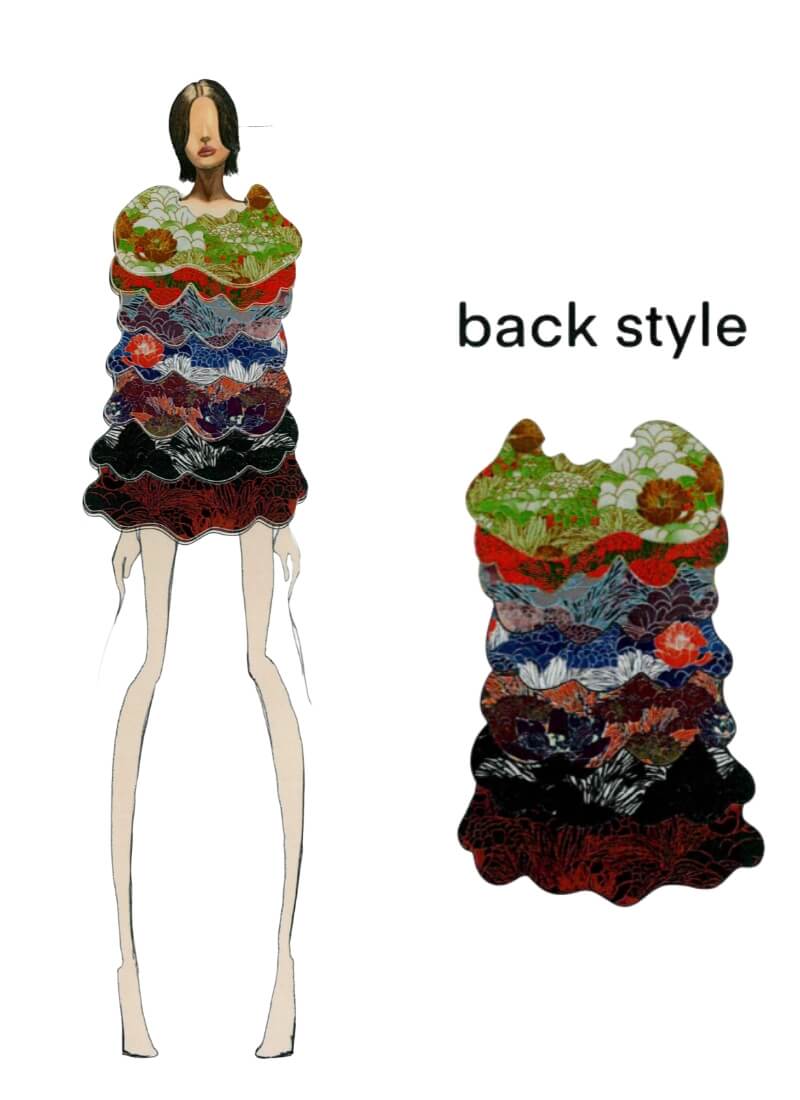
Tokyo Mode Gakuen
澤 優介
Work Title:FRINGE
Concept
Inspired by the beauty found in the fraying threads of kimono fabric.
A new cultural aesthetic that blends the traditional kimono with the decadent trends of contemporary fashion.Features
- The frayed appearance of the kimono fabric is assembled into a motif that reflects the relentless waves of change in our times.
-
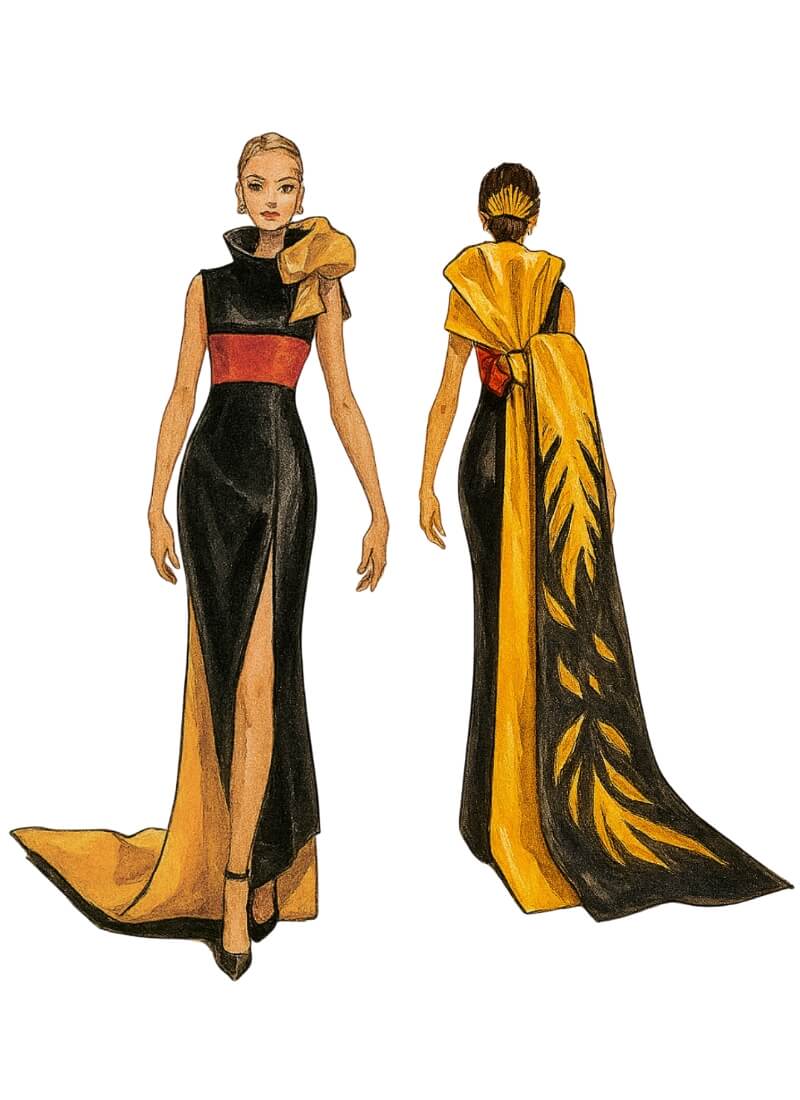
General application
田井 法子
Work Title:Zen Aesthetics – "Irregularity"
Concept
My goal was to translate Zen art into clothing and express the Japanese sense of beauty.
The design fuses "wabi," the appreciation of richness in simplicity, with "fukinsei," the sense of beauty that stems from irregularity.Features
- The simple style without excessive embellishment showcases the beauty of kimono and obi materials and patterns.
- The overall design conveys a sense of "wabi", while the boldly asymmetrical obi in the back expresses "fukinsei" and individuality.
-

Bunka Fashion College
西﨑 有那
Work Title:REGENERATE
Concept
REGENERATE — Rebirth
The design expresses the process of wound healing and skin regeneration.Features
- The concept of regenerating skin is directly translated into outerwear design.
- The process of wound healing is represented through slash quilting. New textures are created by combining unwanted kimono fabrics.
-
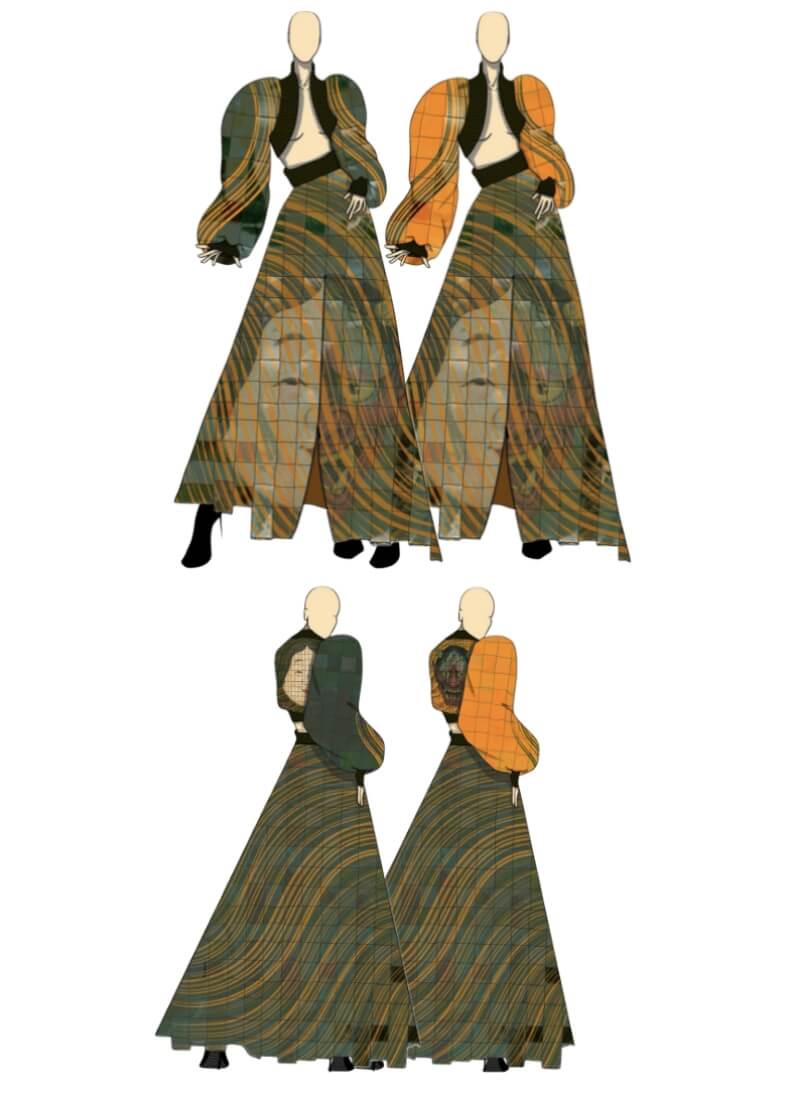
General application
花野井 瑠美
Work Title:"OMOTEURA" That Which Dwells Under the Torn Surface
Concept
Through the technique of sakiori (rag weaving), this piece carefully weaves together opposing emotions—good and evil, kindness and anger—along with contradictions and wavering feelings, carefully incorporating both sides. It gently embraces and affirms human imperfections, inner conflicts, loneliness, confusion, and sorrow.
Features
- Sakiori: Weaving together the calmness of the Okame mask and the ferocity of the Hannya mask to symbolize memory and identity.
- Slash quilting: Faces peek through slits, revealing true natures and conflicting emotions.
-
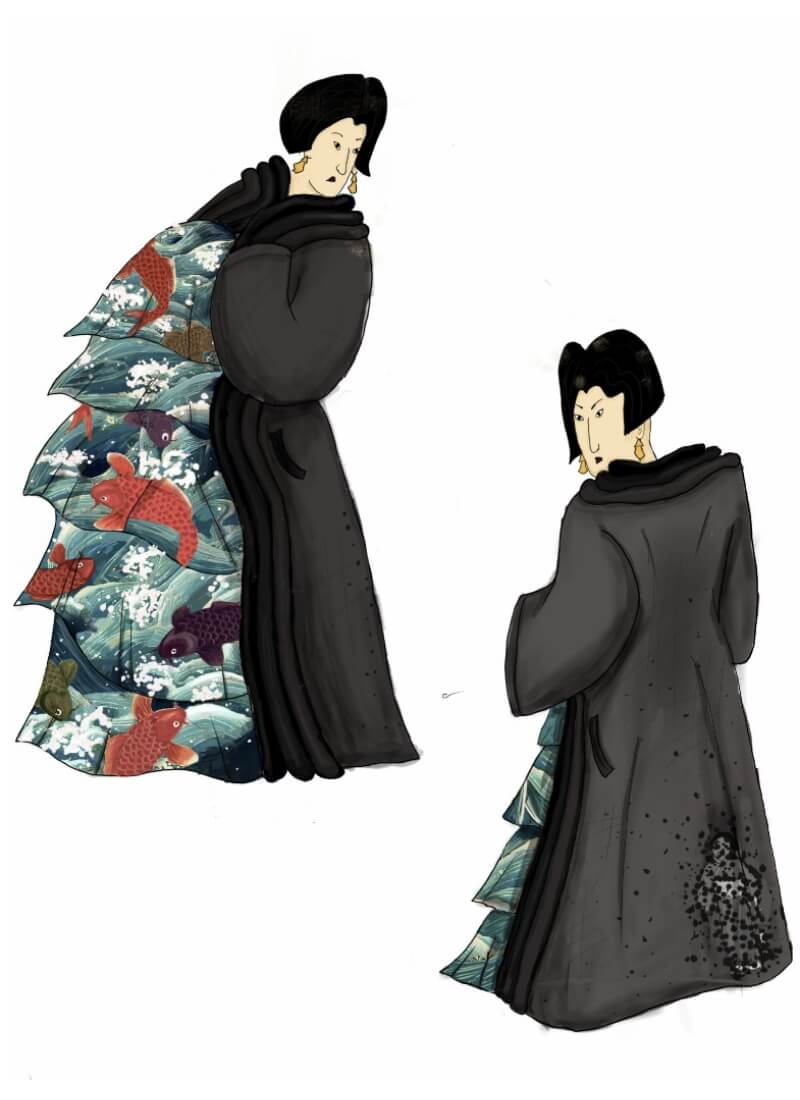
Bunka Gakuen University
Hong joongeom
Work Title:Oiran: Structure and Circulation of Emotion – Emotional Eruption
Concept
The bright blue fabric flowing outward visualizes the moment when suppressed emotions, along with memories of the past, suddenly burst forth, symbolizing an emotional explosion and inner transformation.
Features
- The pointillist image on the back symbolizes the childhood memories of an oiran (a high-ranking courtesan), depicting scars and traces of emotion lingering within a dark past.
- The vibrant dress made from goldfish-patterned fabric expresses pent-up emotions that can no longer be contained, flowing outward like a waterfall.
-
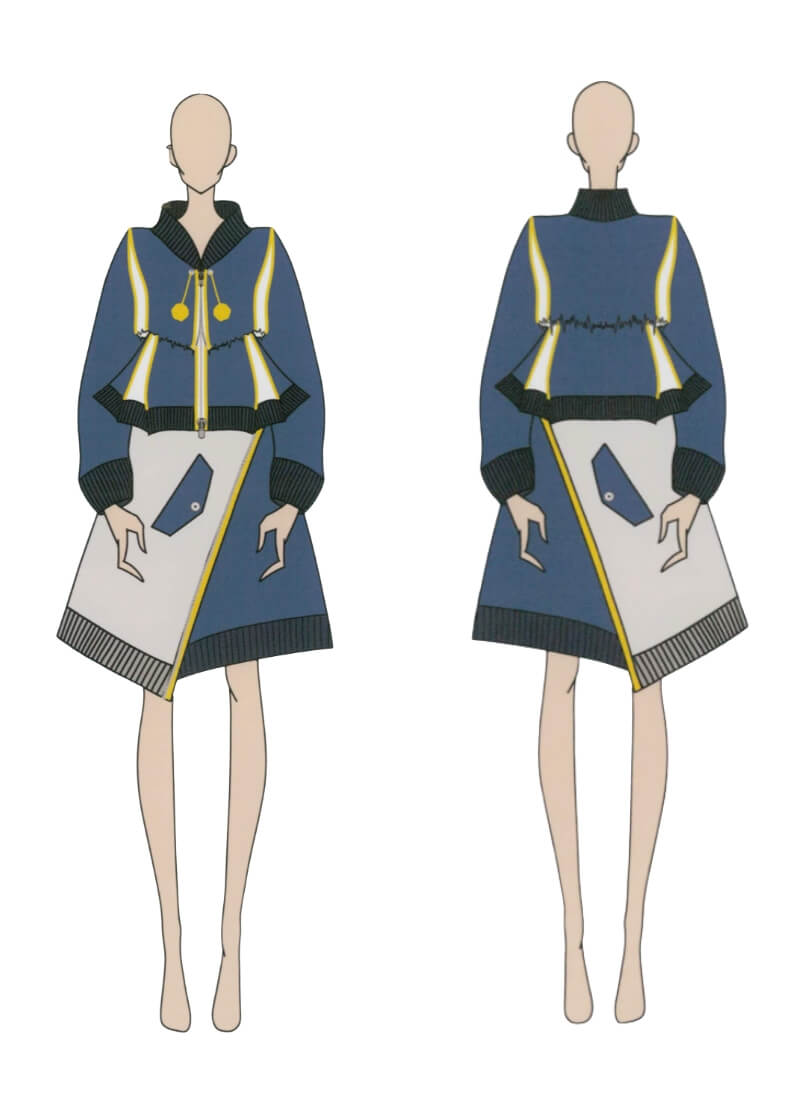
Tokyo Mode Gakuen
武藤 海斗
Work Title:KM-1
Concept
Transforming the refined beauty of kimono into a more casual, wearable item, making it easier for more people to enjoy kimono-inspired fashion in their everyday lives.
Features
- The design features a double-layered jacket inspired by the MA-1, with the outer layer left with raw edges and the inner layer constructed in a three-dimensional shape.
- The look is finished with a wrap skirt reminiscent of a kimono style, incorporating MA-1 details.
-
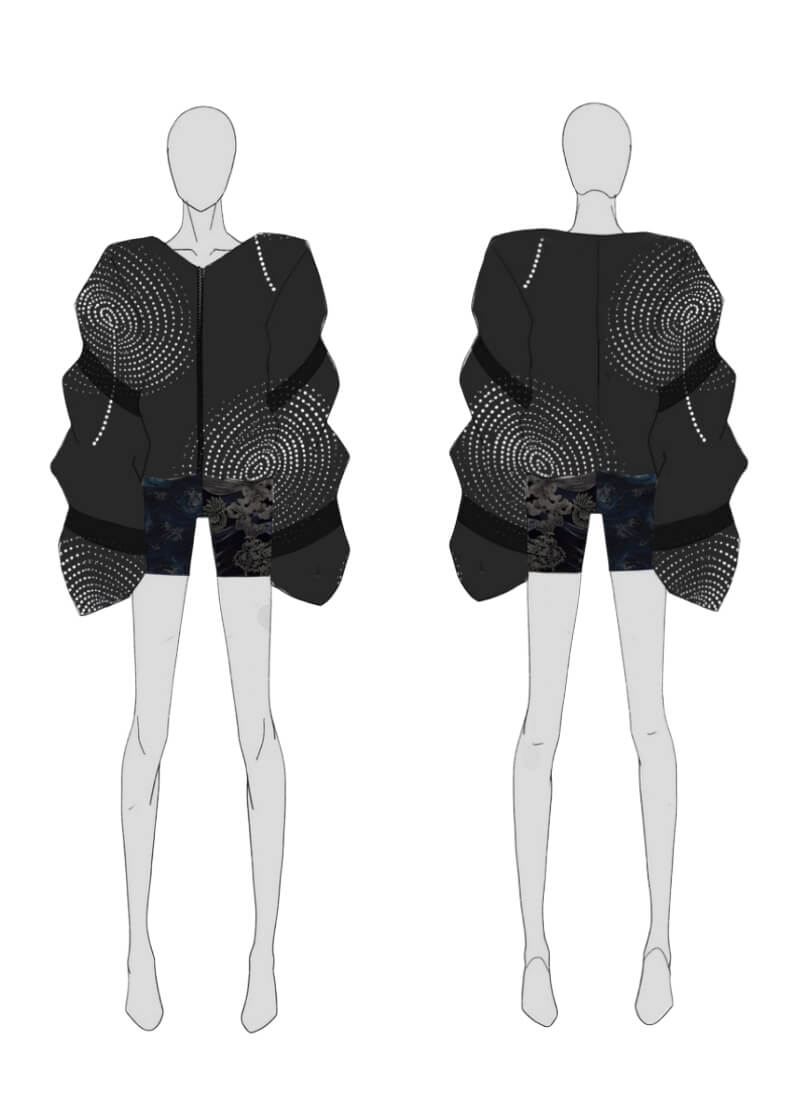
Professional Institute of International Fashion
女鹿 心優
Work Title:Echoes of Obi
Concept
Reinterpreting "obi" from a tool for binding the body to an entity that envelops and speaks to the wearer. The piece seeks to maximize the inherent power of cloth, projecting a vision of the future.
Features
- Leveraging the unique thickness and stiffness of the obi, the design creates three-dimensional forms that extend away from the body.
- By reinterpreting the traditional obi, this work presents a new style of Japanese dress that connects tradition with the future.
-
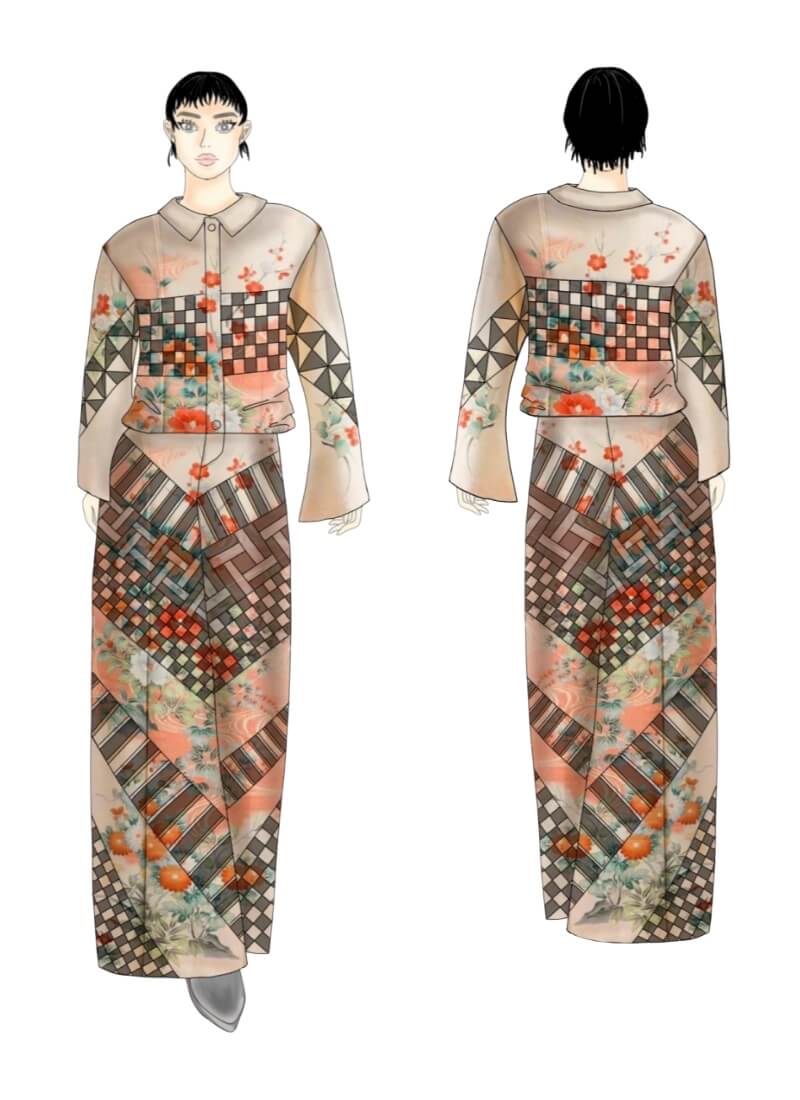
Professional Institute of International Fashion
森田 果恋
Work Title:Geometric Tradition
Concept
In a world where Western clothing has become mainstream, kimono are no longer worn as part of daily life.
What if kimono had remained the norm and continued to evolve? What kind of clothing would we be wearing now?
This piece explores an alternative world of Japanese dress.Features
- This modern-looking style combines fabric treatments rarely done with kimono, layered with traditional Japanese geometric patterns.
- The pattern is made using the distinctive rectangular kimono fabric with minimal fabric waste.

